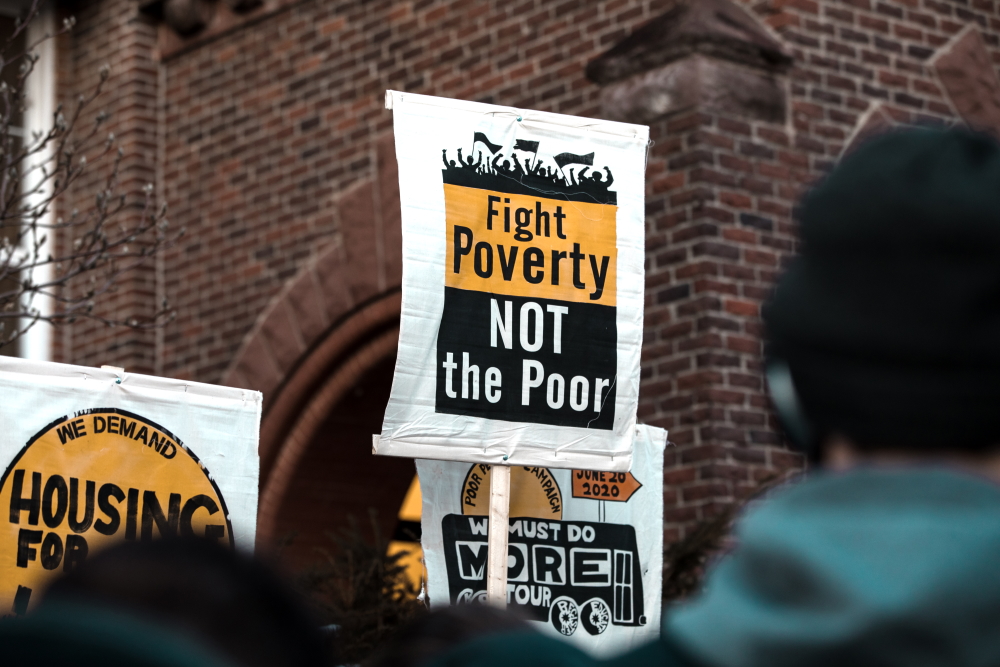(Series: Part 5 of 7)
Part 1: How Do We Make Youth Homelessness Effort Bipartisan?
Part 2: America’s Biases Marginalize Youth, Drive Them to Homelessness
Part 3: Collective Decision-making Can Neutralize Politics of Fear
Part 4: So How Does This Collective Decision-making Work?
![]() Now that we have equalized the playing field among the political and ideological spectrum, let’s turn to two more groups of stakeholders that must be at the table and included in a governor’s executive order — advocacy groups and youth.
Now that we have equalized the playing field among the political and ideological spectrum, let’s turn to two more groups of stakeholders that must be at the table and included in a governor’s executive order — advocacy groups and youth.
In New Mexico, for example, the New Mexico Coalition to End Homelessness must be at the table. They are the largest advocacy group with a statewide network of programs and shelters having been advocating the longest. They are rich with knowledge and experience of the problem and the means to go about approaching it, but they need the backbone and support of the various state actors who can contribute collectively to build a much stronger network as well as a more formidable statewide approach.
And of course, and as we mentioned previously, we must consult with those who are impacted the most — the youth.
Framing the problem, issues
Once a collaborative team has been created, it is time to frame the problem and issues, which proves to be the most significant step in the decision-making process. Framing the problem and issues is essential because how a problem or decision is defined also defines the available alternatives to resolving the problem.
Framing the problem describes the global context for the decision. For example, “What is the ultimate objective of the decision? What are the root-cause causes of the issue?” The group must begin with the symptom and keep asking why until the cause is discovered.
This approach is analogous to the model of epidemiology (i.e., the study of disease). This model is the quintessential approach to discovering causes. The premise is grounded in getting to know the targeted population (in our case, homeless youth) and not limiting the question to why youth are homeless, but also asking why the system is faring poorly in preventing and reducing youth homelessness.
Looking to epidemiology, the study is driven in part by two basic facts: (1) diseases do not occur by chance — there are always determinants for the disease to occur — and (2) diseases are not distributed at random — distribution is related to risk factors that need to be studied for the population in order to identify solutions.
The state of homelessness of course is not a disease, but it behaves like diseases. Homelessness does not occur by chance nor is it randomly distributed, which means it can be studied to identify its root causes. Once the causes are identified, solutions can be better identified.

Judge Steven C. Teske
By framing the problem from an epidemiological context, our perspective shifts away from viewing homelessness as a cause and more so as a symptom of deep-rooted causes. By analogy, the same holds true for treating delinquent behaviors. Because the delinquent conduct is a symptom of underlying causes, punishment does not do well to rehabilitate delinquent behaviors.
The end result is to punish the symptom. Imagine your doctor punishing you for having the flu instead of using diagnostic tools to determine what is causing your headaches, fever, coughing and other symptoms. You would not return to the doctor and might even file a complaint with the medical licensing board.
Framing the problem of any social issue must include the fiscal impact of the problem on taxpayers. We have reviewed the literature respecting the costs of homelessness and the best estimate, which was reviewed by Politifact, is that it costs taxpayers at a minimum $35,000 per homeless person annually, but in actuality, the cost per homeless person is in a range of $35,000 to $150,000 annually. Costs specifically associated with youth homelessness is approximately half of this amount.
We looked at the few studies conducted on the costs of youth homelessness around the country and it appears to range from $15,000 to $20,000 per youth annually.
Costs of chronic homelessness
For example, in a study on the economic burden of youth experiencing homelessness in Hennepin County (Minneapolis), it estimated that on average youth homelessness imposed a fiscal cost of $17,152 and a social cost of $18,638 per youth annually. As a group, the 1,451 members of the cohort study cost taxpayers an estimated $24,894,610, and cost society an estimated $27,049,551. The largest costs to taxpayers were public expenditures for the juvenile and criminal justice systems and welfare transfer payments to cohort members. Large costs to society included the costs of crime to victims and lost earnings by members.
These economic burden studies give us a relatively good idea how much it costs taxpayers annually if we continue to do little to solve the problem. But trying to ascertain the most accurate costs of youth homelessness requires breaking homelessness into two groups: those who will be homeless for only a few weeks or a couple of months, and those who are “chronically homeless,” meaning they have been without a place to live for more than a year, and have other problems — mental illness or substance abuse or other debilitating damage. It is estimated that the vast majority, about 85%, are considered short-term or temporary homeless. It is the other 15% who are chronically homeless that cost the most.
A conservative approach, and one that is likely more accurate for costs associated with youth homelessness in New Mexico, is the following formula:
(Total Homeless Youth .15) $17,152 = Cost of Chronic Youth Homelessness

Naomi Smoot
The math is simple. All we need is the estimated number of homeless youths in New Mexico to measure the economic impact. For example, in 2014 when New Mexico was ranked 46th in the U.S. for youth homelessness (today it’s worse), there were an estimated 22,463 homeless youth. This brings the economic burden on New Mexico taxpayers to about $58 million annually.
Keep in mind this is a conservative estimate accounting only for the costs of chronic youth homelessness. If we cut the costs of the nonchronic homeless by 75% (because their state of homelessness is in the range of a few weeks to a couple of months), the taxpayer costs are estimated at $82 million. By combining the costs for chronic and temporary homelessness, the total costs to New Mexico taxpayers annually is about $140 million.
We understand, of course, this is an approximate guess based on costs derived from an urban city in Minneapolis applied to a location with some unique differences. However, irrespective of the true economic costs of youth homelessness in New Mexico, it will not vary by much.
Suffice it to say, the cost to New Mexico taxpayers is not a drop in the bucket. When framing the problem and issues, the costs associated with a problem is compounded knowing that there are proven solutions that are cost-effective for which these costs can be considerably reduced. More to the point is that part of the cost savings can be redirected to pay for the proven solutions.
There is a systemic problem when the efforts made to date are not making a good return on taxpayer investment. By questioning why taxpayers are not getting a better return on their investment, the problem is framed using the epidemiology model: First identify the symptoms (high cost and high homelessness) and go from there until the causes are identified.
Steven Teske is the chief judge of the Juvenile Court of Clayton County, Ga., was the national chair of the Coalition For Juvenile Justice and won the 2018 leadership prize from the Juvenile Law Center. He served two terms on the Federal Advisory Committee for Juvenile Justice, is a former member of the Board of Directors of the National Council of Juvenile and Family Court Judges and has testified before Congress numerous times on juvenile justice reform.
Naomi Smoot Evans is the executive director of the Coalition For Juvenile Justice, where she oversees the organization's efforts to help states create brighter outcomes for youth. She co-chairs the Act 4 Juvenile Justice Coalition and was instrumental in passage of the 2018 Juvenile Justice Reform Act.
